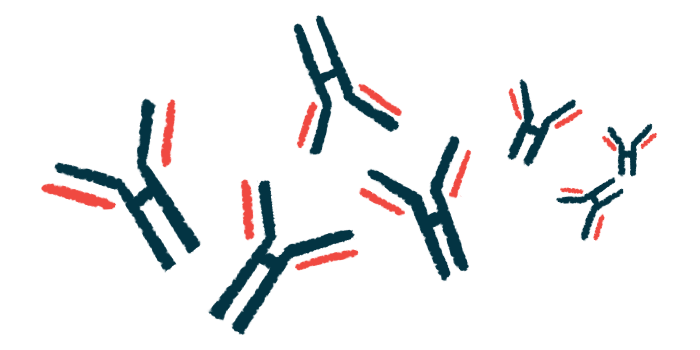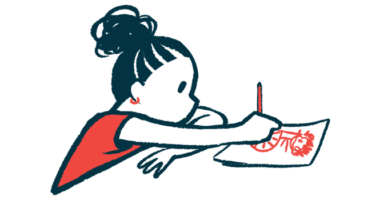Self-reactive antibodies may be linked to disease severity in aHUS children
Researchers say anti-factor B antibodies may aid in disease development

At the onset of atypical hemolytic uremic syndrome (aHUS) among children in India, high levels of antibodies against a complement protein called factor B were tied to disease severity, a new study by researchers in New Delhi revealed.
Importantly, all pediatric patients with genetic mutations associated with aHUS did not have these antibodies.
The scientists speculated that anti-factor B antibodies may contribute to the development of the rare disease — which is linked to severe acute kidney injury in children — by triggering the complement cascade, a part of the immune system that is overactive in aHUS.
The study, “Anti-factor B antibodies in atypical hemolytic uremic syndrome,” was published in the journal Pediatric Nephrology.
Testing for the presence of anti-factor B autoantibodies in children
The blood clotting and inflammation in small blood vessels that characterize aHUS are caused by the overactivation of the complement cascade, a part of the immune system that helps defend the body from invading microbes. Over time, these tiny blood vessels can become clogged, leading to tissue damage, particularly in the kidneys.
Most aHUS cases are associated with inherited mutations in genes that regulate the complement cascade. However, the presence of such mutations does not necessarily mean a person will develop the condition.
Usually, but not always, a triggering event also is needed for aHUS to manifest. For many patients, its underlying cause remains unknown.
Self-reactive antibodies, or autoantibodies, that target protein components of the complement cascade in the bloodstream of patients with aHUS have been found in previous studies. For example, autoantibodies that disrupt the function of a complement protein called factor H, known as FH, have been reported in up to 45% of pediatric patients worldwide — and in more than half (about 55%) of those in India.
Autoantibodies that target complement factor B, or FB, also have been found in 14% of children with C3 glomerulopathy (C3G), a similar condition caused by mutations in complement-related genes and marked by impaired kidney function.
However, “these autoantibodies have not been examined in patients with aHUS,” the researchers wrote.
That led this team of scientists, from the All India Institute of Medical Sciences, to screen blood samples from nearly 300 patients, all younger than 18, for the presence of anti-factor B autoantibodies. Among these children, 216 had aHUS and 81 were IC-MPGN patients, meaning they had C3G/immune complex membranoproliferative glomerulonephritis.
Samples from 103 healthy adult blood donors also were tested to determine an upper-limit cutoff, which was established at 306.7 arbitrary units per milliliter (AU/mL).
High autoantibody levels at aHUS onset linked to disease severity
Blood tests revealed that in 21 of the 216 aHUS patients (9.7%), anti-factor B autoantibodies were above the upper-limit threshold.
The levels of these autoantibodies were highest among patients without an apparent genetic or autoimmune predisposition to aHUS (median level of 1024.7 AU/mL), who comprised 11.8% of the group. Those with anti-factor H antibodies, who made up 11.5% of the patients, also had the highest levels of antibodies against factor B (median of 1045.6 AU/mL).
None of the patients with known genetic mutations, directly or indirectly linked to aHUS, had anti-factor B antibodies.
Overall, clinical and biochemical features were similar among the aHUS patients whether with or without antibodies against factor B. At disease onset, however, high levels of these autoantibodies seemed to be associated with disease severity, as indicated by their significant correlation with low platelet and hemoglobin levels. Hemoglobin is the protein that carries oxygen in red blood cells.
The study shows propensity for autoantibody generation and co-existence of multiple risk factors for aHUS in Indian children.
Anti-factor B autoantibody levels significantly declined — from a median of 1045.6 to 93.3 AU/mL — following plasma exchange in 14 patients who also had anti-factor H antibodies. They also remained below the upper threshold limit over the course of a six-month follow-up period. A decline in anti-factor H antibodies also occurred after plasma exchange.
A rise in both anti-factor H and anti-factor B antibody levels were seen in one patient who relapsed about two years after disease onset.
Yet, the presence of anti-factor B autoantibodies did not predict poor outcomes or relapses in aHUS patients.
The researchers also observed that the levels of anti-factor B autoantibodies were significantly higher in patients with aHUS than in those with C3G/IC-MPGN.
“The study shows propensity for autoantibody generation and co-existence of multiple risk factors for aHUS in Indian children,” the researchers wrote.
“Further studies are required to establish the diagnostic and prognostic value of these antibodies and determine if the antibodies are disease-modifying and require therapeutic intervention,” the team noted.







